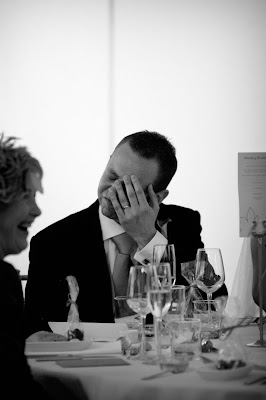Cheers
Josh
The art of Observation
Part 3
The Invisible Observer
Steven Taylor
A few years back, when observational wedding photography was still quite new to the UK, I read an article in a Photography Magazine. The magazine was from a new trade association for wedding photographers, I wasn’t a member and I didn’t subscribe to the magazine, they had sent it to me to persuade me to join. The article was called something like “ How to get the Look of Reportage Wedding Photography”. It went on to explain that “Reportage” was about making pictures in black and white and creating pictures that depicted the subject doing something, not looking at the camera. They talked about using fast film to accentuate the grain (pre-digital of course), they suggested printing in the border. My point is the whole article, as it said in the title, was about achieving a look. That premise for me was miles off the mark. I got that look to my pictures because of my approach to the wedding day, because of my philosophy of being an invisible observer.

As I have said before, I found contrived wedding photographs embarrassing to make, and if I did I am sure my subjects did. I didn’t like the way the photographer dominated the wedding day. I didn’t like the idea of bossing people around just to make a photograph and I found the whole starring into the flowers thing totally naff (the 21st century equivalent is the bride holding her veil above her head to blow in the wind), just my opinion you understand. So for me, “reportage wedding photography” wasn’t about a look, if it had been it would have gone out of fashion 10 years ago.
Around the same time I remember an album manufacturer’s rep telling me he had a customer who said he would like to do “reportage” but didn’t know what pictures to make.
Do you mind if I go back to calling the style observational? Thanks.
Observational wedding photography is about truth. It is about telling the story of the day as it was, not as the photographer contrived it. There is no shortage of images to make on the day; I imagine that the photographer the rep was referring to was more comfortable making portraits, and that is the point of why there is such a gulf between traditional and observational wedding photography.

Since professional photographers have photographed weddings, usually, the photographer of choice has been the local, high street, family portraitist. A family portrait photographer sells his pictures to the family he depicts. He wants to flatter the subject. The pose is carefully arranged, props are introduced and the subject is lit in the most flattering light. Often the images are retouched to smooth skin and remove blemishes. When these people photographed a wedding their training meant they had to control all of the elements. Also until relatively recently film quality wasn’t brilliant. Films were slow or very grainy and 35mm images didn’t enlarge well. So most photographers worked with medium format cameras that were the size, shape and weight of a brick. Unless you were built like Arnie the cameras were best mounted on tripods and when the light dropped it was time for flash. In the eighties, when I started making observational wedding pictures film technology went through the “T” grain revolution. That meant we had films that would work well in low light, without flash and 35mm negatives enlarged much better so we could leave the tripod at home.

As somebody who was very interested in documentary photography, I consumed all the books and went to all the exhibitions within that genre I could, I really couldn’t see how that methodology couldn’t work on a wedding day. So, combined with my assumption and all the new technology I set out to make observational wedding photography. What happened next was a whole new generation of wedding photographers that, like me, were not portraitists.
That all said I am still concerned with looking for flattering images. Now instead of moving the subject into the right light, I position myself so that the right light falls on the subject. Instead of posing the subject I watch for the subject to find the right pose for themselves. It’s all about observation; I have been to hundreds, maybe thousands of weddings. I know that at some point while the Bride is signing the register the Groom will adjust his new wedding ring, it’s a pretty good chance that when the Bride’s dad walks into the bedroom and sees his Daughter ready to go he will gasp, cry, smile and beam with pride and at some point during the Bestman’s speech the Groom will bury his face in his hands.
So, being an observational wedding photographer is all about being an invisible observer not a visible portraitist.


No comments:
Post a Comment